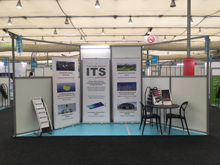At a time when renewable energies are of particular interest, methanation (i.e. degradation by micro-organisms of waste/organic material under controlled conditions, especially in the absence of oxygen) is a popular process (since the resulting biogas can be used as fuel for a heat engine).
The combustion of biogas can enable the production of electrical energy and the recovery of heat (cogeneration): this constitutes a mode of valuation currently quite widespread, which leads to the installation of decentralized power plants in various places (sometimes: in open country), whose original calm must be preserved, which leads to the design and implementation of specific arrangements for soundproofing for cogeneration plants.
Indeed, emergence i.e. the difference between the A-weighted equivalent continuous pressure levels of the ambient noise (power plant in operation) and the residual noise (in the absence of the noise generated by the power plant, but measured over the period of operation of the power plant) is limited - as appropriate to 5 or 6 dB (A) in the daytime and 3 or 4 dB (A) in the nighttime period - in Zones with Regulated Emergence (ZRE), which generally include, in the vicinity: houses, buildable areas and areas occupied by third parties e.g. Establishments Receiving Public (ERP), other industrial establishments.
In addition, a biogas methanation-cogeneration unit that must comply with the regulations applicable to Classified Installations for the Protection of the Environment (CIPE) is subject to respect for the absence of a marked tone (the difference between the sound pressure level in a frequency band of 1/3 octave and the adjacent frequency bands is considered undesirable if it exceeds 10 dB in the frequency range 50 Hz-315 Hz or 5 dB in the frequency range 400 Hz-8000 Hz ).
With industrial engines whose sound power level is often close to 125 dBA ref. 1pW (for both that radiated by body and for exhaust) the achievement of sound pressure levels as low as 55 dB(A) at 10 meters (or even less if residual noise is extremely low) is an ambitious goal.
Envelope of building hosting engines, including openings (doors, ventilation apertures with fans being noisy themselves) and the chimney must be equipped with high performance soundproofing systems, of which the selection of components must be rigorous with respect to all the technical requirements of this type of project which are numerous and various besides acoustics: reaction in case of fire (sometimes fireproof degree of partitions), mechanical resistance, compacity ... .and also, with regard to the exhaust silencers: aerodynamic performance, corrosion resistance, weight when installed on the roof of soundproof containers.
If neighborhood complaints have been recorded in relation to excessive noise emissions from biogas methanation-cogeneration plants, ITS can carry out an on-site diagnosis and provide personalized support for the search and development of noise reduction solutions.
If it is desired to avoid the occurrence of such situations by providing, during the design and costing of the plant, the integration of the appropriate soundproofing means to comply with the regulations on environmental noise, it is possible to usefully contact ITS.
ITS will participate as an exhibitor at the Expobiogaz exhibition on June 2018 the 6th and 7th, in Strasbourg (Grand-East region, France): booth K21 will be the place where it will be necessary to be to know more about the technologies and services offered by ITS with regard to noise control (in general: measurements, studies and works for industrial soundproofing and acoustic insulation/comfort of buildings namely for biogas methanation-cogeneration).
In particular, the renewed and expanded range of engine exhaust system components and systems marketed by ITS will be featured (silencers, Selective Catalytic Reduction devices SCR, industrial chimneys and accessories).
|
ITS booth (K21) |
|
ITS can provide noise reduction solutions for a cogeneration plant.
